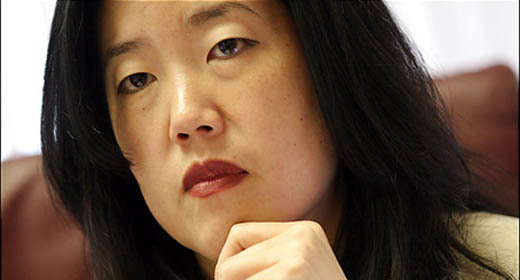Washington, DC public schools have an acute problem with juvenile delinquency.
Trouble is, the problem isn’t with the students but rather the supposed grown-ups in charge of the Washington Teachers Union (WTU).
Once thought to be an unlikely laboratory for school reform, the District’s success with school vouchers, begrudgingly recognized even by the Obama administration, its high incidence of children attending charter schools (35 percent) and its outspoken Schools Chancellor Michelle Rhee have made Washington, DC a bellwether for K-12 reform.
But none of these gains have come without incident. And the latest battle between Rhee and the WTU over the firing of bad teachers is no exception.
IMPACT Leaves a Mark
Last year Rhee worked with rank-and-file teachers to develop a new system for evaluating teacher performance called IMPACT, which ties teacher retention in part to student performance on standardized tests. But only in part.
At the time, WTU boss George Parker grumbled, “[IMPACT] takes the art of teaching and turns it into bean counting.”
Unfortunately, the sort of artistry practiced in DC’s public schools was producing a 49 percent graduation rate. The system’s failure is even more glaring when compared with the 82 percent graduation rate among the District’s school voucher students.
It was hardly surprising the WTU would blanch at holding teachers to account for their students’ academic progress. But it was a surprise the WTU agreed in June to a contract providing significantly more money for teachers—including merit pay incentives—in exchange for empowering Rhee to fire bad teachers, regardless of seniority, under the new IMPACT evaluation criteria.
And when Rhee announced at the end of July that 241 DC teachers would be fired, suddenly WTU officials became the bean counters.
“They’ve gone too far too fast,” Parker complained to the Washington Post. He said the WTU would appeal every termination and likely file a federal unfair labor practice complaint for good measure.
Rhee Changes Paradigm
Rhee should continue to challenge the WTU’s “money for nothing” attitude. Rhee’s willingness to trade more money for better teachers and greater flexibility in removing bad teachers highlights her sophistication as an education reformer.
She is aiming to secure teacher accountability through the back door when politicians—local and federal—inhibit competition that would bring it through the front door.
Rhee’s policy choices indicate she understands two important truths about K-12 education. First, teacher quality is paramount. Second, it is both very difficult and very costly to remove bad teachers under the accepted paradigm of collective bargaining agreements. So Rhee has set out to abide by the first truth by rewarding quality teachers and changing the accepted paradigm.
The scholarship on teacher quality is clear: It is the most important school-related factor in student achievement. Some studies suggest the difference between having a good teacher and having a bad one can exceed one grade-level equivalent in annual achievement growth.
Tough to Fire Bad Teachers
The data on firing bad teachers is equally stark. A Newsweek report published in March found:
“In New York City in 2008, three out of 30,000 tenured teachers were dismissed for cause. The statistics are just as eye-popping in other cities. The percentage of teachers dismissed for poor performance in Chicago between 2005 and 2008 (the most recent figures available) was 0.1 percent. In Akron, Ohio, zero percent. In Toledo, 0.01 percent. In Denver, zero percent.”
Newsweek further observed: “Year after year, about 99 percent of all teachers in the United States are rated ‘satisfactory’ by their school systems; firing a teacher invites a costly court battle with the local union.”
How costly?
A study by the Small Newspaper Group in Illinois found in the years 2001-2005, Illinois school districts spent an average of more than $219,000 in legal fees each time they attempted to terminate a tenured teacher.
Administrators Cowed
The study found the costs of firing bad teachers are so prohibitive in Illinois an average of only two are dismissed each year for cause out of the more than 95,000 tenured teachers in the state,
And that doesn’t begin to account for the time involved.
It took the Los Angeles Unified School District seven years to fire a high school teacher who had been removed from the classroom in 2002 amid allegations of sexual misconduct. The teacher received full salary and benefits during that period.
By comparison, it took four years to build the Golden Gate Bridge.
The teachers’ unions may jawbone the idea that they are not in the business of protecting bad teachers. The unions may attempt to shift the blame onto principals, administrators, and school boards who are “not doing their jobs” in ridding schools of bad teachers. But the costs imposed by the teachers’ unions induce administrators to take the path of least resistance through non-solutions such as New York City’s notorious “rubber rooms.”
Advancing ‘Rhee-form’
It may be economically rational to capitulate to the unions, but reformers such as Rhee recognize appeasing the unions means conceding failure, a failure directly visited upon the students. Remember them?
By maintaining a focus on increasing teacher quality and making calculated tradeoffs designed to get bad actors to do the right thing in spite of themselves, Rhee has DC schools on the right path.
Dan Proft ([email protected]) is a host and featured political commentator on WLS radio in Chicago.




